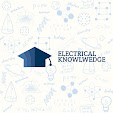MODERN CONTROL THEORY [MCT]
MODERN CONTROL THEORY
Modern Control Theory
1. Modern control theory is carried out strictly in the complex-s or the
frequency domain and can deal with multi-input and multi-output (MIMO)
systems. This overcomes the limitations of classical control theory in more
sophisticated design problems, such as fighter aircraft control.
2. In modern design, a system is represented as a set of the first order
differential equations defined using state variables.
3. Nonlinear, Multivariable, adaptive, and robust control theories
come under this division.
4. Rudolf E Kalman and Aleksandr Lyapunov are well-known among the people
who has shaped modern control theory (MCT)?
MCT- STATE SPACE MODEL
Modern control theory solves many of the limitations by using a much “richer” description
of the plant dynamics. The so-called state-space description provide the
dynamics as a set of coupled first-order
differential equations in a set of internal
variables are known as state variables, together
with a set of algebraic equations that
combine the state variables into physical output variables.
STATE-SPACE MODEL
1. Uses matrices and vectors to represent the system parameters and variables
2. In control engineering, a state-space representation is a mathematical
model of a physical system as a set of input, output, and State variables related
by first-order differential equations. To abstract from the number of inputs,
outputs and states, the variables are expressed as vectors.
Advantages of State Space Model
1. Additional information as states, other than input and output is available
2. Uniform platform for representing time-invariant systems, time-varying
systems, linear systems as well as nonlinear systems
3. It is possible to optimize the systems and use them for optimal design.
4. It is possible to include initial conditions.
5. without truncation of system dynamics
6. Systematic analysis and synthesis of higher-order systems
7. Convenient tool for MIMO systems
8. Can describe the dynamics in almost all systems (mechanical systems, electrical systems, biological systems,
economic systems, social systems, etc.)
9. Transfer function representations are valid only for linear time-invariant (LTI) systems
Disadvantages of State Space Model
1. Complex techniques
2. Many computations are required


No comments:
If you have any doubts, please let me know